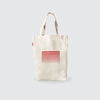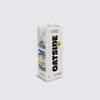
Are you looking to start your journey into home brewing and pour overs? Considering your first V60 but can’t decide which one? In this instalment of our Brew Guide series, we investigate the Hario V60, namely its two most often used iterations, the plastic and ceramic versions. We delve into the respective pros and cons of the two materials, investigate how each one serves different situations for the budding home brewer and how one material might be better suited for you.

Named for the 60-degree angle and conical shape, the V60 came into its final and current form in 2004 after Hario’s previous attempts at a conical shape filter over the decades. Known for its ability to deliver subtle tasting notes and complex flavour, the V60s popularity has also been boosted by its frequent appearance at coffee brewing contests, most notably the World Brewers Cup. It is no wonder then that this once humble dripper has now become a household item for the home brewer.
Brewing with a V60 usually involves pouring hot water over ground coffee placed in a piece of filter paper and contained in the V60 itself. The solution is filtered through them to extract soluble flavour compounds into a vessel. The successful and well-balanced extraction of these flavour compounds is dependent on several factors, including brew ratio, brew time, water temperature and the material of your dripper. When it comes to a choice between Ceramic or Plastic, it really boils down to these features:
1. Thermal Mass and Resistance
Perhaps the most crucial factor in this comparison is thermal mass. Simply put, thermal mass indicates how much heat a material must absorb before its temperature rises. Plastic has a lower thermal mass meaning it requires less heat before increasing temperature, so it heats up quicker and “steals” less heat from your brew. Ceramic has a higher thermal mass meaning it requires more heat before it increases temperature and so heats up slower, potentially taking more heat from your brew. However, this problem is easily remediable by preheating the dripper for a longer period to ensure more stable heat levels during brewing.
Ceramic also has a higher resistance to heat, with a high melting point of 2000°C whereas plastic (typically resin or polypropylene) has a melting point of 115°C-160°C. This means plastic drippers are more likely to be worn out from repeated application of high heat over long periods of time.
2. Fragility and Durability
It is without doubt that plastic wins over ceramic in being less breakable and thus, more suitable for the oft travelling or slightly clumsier home brewer. When it comes to durability, the plastic drippers, with its lower resistance to heat, have a shorter life span despite being more cost effective. Ceramic drippers last longer but come with a slight premium. It is also worth noting that plastic drippers might not be for people who worry about chemical agents leaking from plastics and absorption of residual acids from coffee and cleaning products into plastic over time.
3. Aesthetics
Let’s be honest here. We eat and drink with not just our mouths but also our eyes. And while aesthetic tastes, much like flavour preferences, can be very subjective, there is just no denying that a ceramic dripper gives us as much a visual feast as it does a flavourful cup!
Considering that your pour overs are more than likely to become a daily routine, why limit your pour over pleasure to just taste when you could heighten it with a touch of visual class? With plastic, your options are also more limited between red, white or transparent. But with a plethora of ceramic colour options, one can certainly feel spoilt for choice.
When it comes to picking a dripper, it is important to think of the different situations and conditions one would be brewing in. Are you just starting out? A bit more cost-conscious or prone to taking filters with you on your travels? Then perhaps a plastic dripper is better suited for you.
Are you more into experimenting with your brews or like the idea of having a more aesthetic brewing setup? Then perhaps consider a ceramic dripper. Either way, you can’t really go wrong since a great cup of coffee will always be possible with consistent practice.









